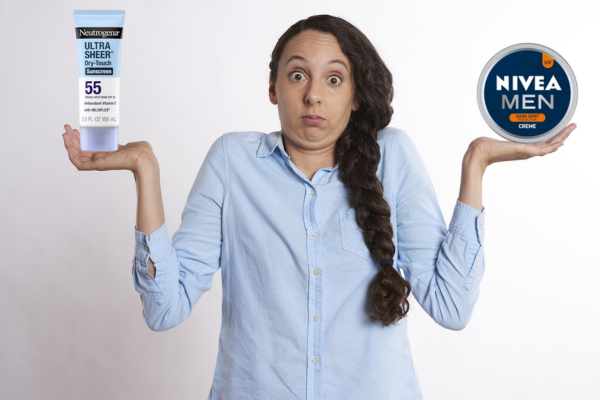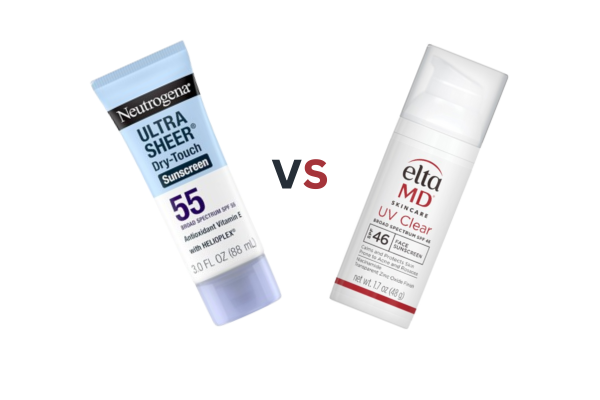Skin is not just the body’s largest organ but also our frontline defense against the world. I still remember the summer my skin took the worst beating of my life. Growing up in a hot, sunny region, I never paid much attention to sun care—no sunscreen, no protective clothing. Days at the beach or long walks under the blazing sun left my skin darkened, uneven, and painfully burned. But the real turning point came when my dermatologist explained how UV rays were not only tanning me but breaking down my skin’s collagen, accelerating aging, and increasing my risk of skin cancers.
According to the World Health Organization (WHO), between 50% and 90% of skin changes associated with aging are actually caused by sun exposure (source: WHO, Ultraviolet Radiation and the INTERSUN Programme). This revelation made me realize that protecting my skin from UV rays wasn’t about vanity but health. This article from Shopwithchoice is my promise to share everything I learned so you can protect your skin effectively and glow bright naturally.
Table of Contents
Understanding Your Skin: Characteristics and Types

Skin varies from person to person. Some people have oily skin prone to acne; others have dry, flaky skin that cracks easily. Normal skin balances oil and hydration, while combination skin has both oily and dry zones. Sensitive skin can react with redness or itchiness to weather, products, or even stress.
Our skin tone, determined by melanin, also affects how it reacts to sun exposure. Darker skin has more natural sun protection but still suffers from hyperpigmentation, while lighter skin burns more easily and is at higher risk of UV-induced cancers. Understanding your skin type helps choose the right protective measures.
How UV Rays Affect Different Skin Types
The sun emits UVA and UVB rays. UVA penetrates deep into the dermis, causing premature aging (wrinkles, loss of elasticity). UVB damages the outer layers, causing sunburn and direct DNA damage that can lead to cancer.
- Skin Darkening: Melanin production increases to absorb UV, leading to tanning or uneven pigmentation.
- Skin Diseases: Chronic exposure raises the risk of actinic keratosis, melanoma, and non-melanoma skin cancers. According to the American Cancer Society, over 5 million cases of skin cancer are diagnosed in the U.S. each year (source: ACS).
- Skin Allergies: Photosensitivity reactions can cause rashes or hives upon sun exposure.
- Premature Aging: Known as photoaging, characterized by wrinkles, leathery texture, and dark spots.
By understanding how UV rays damage different skin types, we can tailor our defenses more effectively.
How to Protect Your Skin from UV Rays
Protecting your skin isn’t complicated, but it requires daily commitment. Here’s a detailed, actionable plan:
1) Use Broad-Spectrum Sunscreen Daily
Why: Sunscreen is your best defense against both UVA and UVB.
- Choose broad-spectrum SPF 30 or higher.
- Apply 15–30 minutes before going outside.
- Use enough: about a shot-glass full (30 ml) for the whole body.
- Don’t forget ears, neck, hands, feet, and the back of knees.
- Reapply every 2 hours, and immediately after swimming or sweating.
Regular sunscreen use has been shown to reduce skin cancer risk (Source: American Academy of Dermatology).
2) Wear Protective Clothing
Why: Clothes act as a physical barrier against UV rays.
- Opt for long-sleeved shirts and long pants.
- Choose tightly woven fabrics that block light.
- Look for clothes with UPF (Ultraviolet Protection Factor) labels; UPF 50+ blocks ~98% of UV radiation.
- Darker colors offer better protection than light ones.
A 2019 study in Photodermatology, Photoimmunology & Photomedicine found that UPF-rated clothing significantly reduces UV transmission compared to regular fabrics.
3) Wear Hats with Wide Brims
Why: Hats shade the face, scalp, ears, and neck—common sites for sunburn and skin cancer.
- Choose a wide-brimmed hat (at least 3 inches) for maximum coverage.
- Avoid baseball caps alone (they leave ears and neck exposed).
- For outdoor activities, choose hats with neck flaps for extra coverage.
Hats are a simple, effective strategy, especially in regions with intense sun.
4) Use Sunglasses with UV Protection
Why: UV rays damage not just skin but also eyes, increasing the risk of cataracts and eyelid cancers.
- Choose sunglasses labeled “100% UVA/UVB protection” or “UV400.”
- Wraparound styles block rays from the sides.
- Darker lenses don’t always mean better protection—check the UV rating.
Protecting your eyes also helps prevent squinting and reduces eye strain outdoors.
5) Seek Shade Whenever Possible
Why: Even with sunscreen and clothing, reducing direct exposure is crucial.
- Stay under trees, umbrellas, or canopies during peak UV hours.
- At the beach, use a sun tent or large umbrella.
- When walking, choose shaded paths.
The CDC recommends seeking shade as one of the key ways to reduce skin cancer risk.
6) Avoid Tanning Beds
Why: Tanning beds emit UVA and UVB rays that damage skin just like the sun—sometimes even more intensely.
Fact: The Skin Cancer Foundation reports using a tanning bed before age 35 increases melanoma risk by 75%.
- Embrace your natural skin tone.
- Use self-tanning lotions or sprays if you want a bronzed look without UV exposure.
This step is essential for long-term skin health.
7) Be Extra Careful Near Water, Sand and Snow
Why: These surfaces reflect UV rays, increasing exposure.
- Reapply sunscreen more often at the beach or pool.
- Use extra-protective clothing and hats on ski trips.
- Stay in shaded areas when possible.
Snow reflects up to 80% of UV rays, doubling exposure risks.
8) Teach Children Sun Safety Early
Why: UV damage is cumulative and often begins in childhood.
- Apply sunscreen on kids 6 months and older.
- Dress them in hats and UPF clothing.
- Encourage playing in shaded areas during midday.
Instilling habits early helps prevent skin cancer later in life.
9) Maintain a Consistent Routine
Protecting your skin isn’t a one-time act but a lifelong habit.
- Make sunscreen part of your daily skincare.
- Keep a hat and sunglasses handy.
- Check the UV index as routinely as checking the weather.
Consistency is what delivers real protection over years.
Home Remedies for Glowing Skin
These home remedies help maintain its natural glow:
1. Gentle Cleansing
- Wash twice daily to remove sweat, dirt, sunscreen residues.
- Use mild cleansers that don’t strip natural oils.
2. Exfoliation
- 1–2 times a week to remove dead skin cells.
- Homemade scrubs (oatmeal, yogurt, honey) work well.
3. Hydration
- Drink at least 8 glasses of water daily.
- Use lightweight, non-comedogenic moisturizers to lock in moisture.
4. Face Masks
- Turmeric + yogurt mask for brightening.
- Aloe vera gel for soothing inflammation.
5. Balanced Diet
- Fresh fruits and vegetables rich in vitamins A, C, and E.
- Nuts and seeds for healthy fats that support barrier function.
6. Stress Management
- Practice meditation, yoga, or simple breathing exercises.
- Chronic stress can worsen skin issues like acne and dullness.
7. Sleep Hygiene
- 7–8 hours of restful sleep promotes skin repair and glow.
- Use clean pillowcases to reduce bacteria.
Shopwithchoice: Our Role in Your Journey
At Shopwithchoice, we know that protecting your skin from UV damage and maintaining a healthy glow is about more than products—it’s about education and informed choices. That’s why this guide aims to empower you with clear, actionable steps rooted in science. We’re committed to helping our readers and customers develop routines that suit their unique skin needs, protect them from sun-induced harm, and cultivate radiant, healthy complexions for life.
Conclusion
Your skin is your body’s frontline defense and a mirror of your overall health. Protecting it from the sun’s harsh UV rays isn’t just about preventing a tan or slowing wrinkles—it’s about safeguarding your health and self-confidence for years to come. By understanding your skin, learning how UV rays truly work, adopting daily sun protection strategies, and practicing simple home remedies, you can achieve that lasting, natural glow you deserve.
Ready to start caring for your skin the way it deserves?





